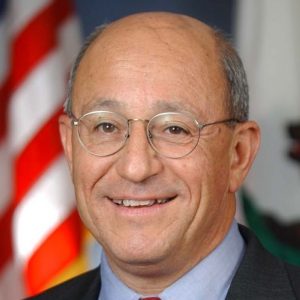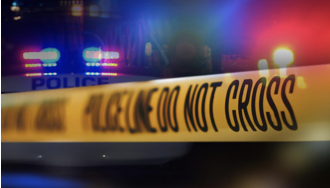New Little Hoover Commission report focuses on five ways to improve law enforcement training in California
by Pedro Nava and Janna Sidley, special to CalMatters
California spends millions of dollars each year on law enforcement training, but never takes a look back to see what we’re getting in return. We don’t consider whether the training actually addressed the problems it was intended to solve or if it even remains relevant for the realities of policing today.

This must change.
As members of the Little Hoover Commission, California’s independent government watchdog, we have spent the past year examining training for the state’s nearly 700 law enforcement agencies and more than 87,000 full-time sworn and reserve peace officers. We found very little evidence to prove which types of training actually achieve intended goals and positively impact officer behavior in the field – and which do not.
Law enforcement training has long been relied upon as an instrument of change. In the wake of deadly police encounters involving Black Americans and excessive use of force, both now and in the past, state lawmakers have turned to police training as one way to implement critical reforms.

Yet despite this ongoing emphasis on police training, there is an alarming lack of evidence for much of California’s current approach to it.
Take basic training academies, for starters. From total size to instructional hours to rates of graduation, California’s 41 academies differ in substantial ways. Yet no overall assessment has been conducted to compare how effective each model is in preparing people to become peace officers. As a result, California does not know what kind of training works best for its officers or the communities in which they serve.
To make matters worse, entry-level training often crams curriculum into limited hours, resulting in a learning approach that one officer likened to drinking from a fire hose.
And since California does not require – or invest in – many ongoing educational opportunities for peace officers throughout their careers, there are few avenues for officers to stay current with ever-evolving laws, policies, trends and societal demands.
Legislators have too often heaped additional training requirements on officers without evaluating how effective those requirements actually are. Between 2015 and 2020, lawmakers introduced an average of more than nine bills a year related to officer training – almost double the average between 2010 and 2014. Such an approach leaves little room for thoughtful priority setting and evaluation.
Californians deserve to know that their taxpayer dollars are being used to bring about the police reforms they want to see.
That’s why the Little Hoover Commission’s new report, “Law Enforcement Training: Identifying What Works for Officers and Communities,” calls for five simple steps that will help California progress toward meaningful law enforcement reform:
First, incorporate academic research into training. Lawmakers should temporarily refrain from adding new training requirements and instead provide funding to partner with academic researchers to evaluate the effectiveness of current training.
Second, assess and compare the state’s 41 basic training academies. We need to figure out which models are beneficial for officers and which are not, and the variation among California’s existing academies provides a natural research experiment in which to do this.
Third, rethink California’s approach to entry-level training. Instead of cramming an ever-changing list of required training topics into an allotted set of hours, the state should assess and restructure current curriculum to ensure it emphasizes the skills new officers need and gives officers appropriate time to practice.
Fourth, develop robust ongoing education for officers. Developing a new advanced academy for officers with two to five years of experience and providing more pathways to training, including online courses, will help ensure officers have access to additional training, whatever their role or tenure.
And finally, create a more representative POST Commission. While maintaining a majority of seats for law enforcement is crucial, the state should adjust current membership to add additional public members with expertise in academic research, adult education, health and mental health, as well as individuals from vulnerable communities.
Improved law enforcement training is within reach, but California must act now. The safety of our officers, our communities and our state depends on it.
This special guest commentary first appeared in CalMatters, and was republished with their permission
Editor’s Note
The Little Hoover Commission is America’s only permanent, independent citizens commission working to improve state government. A nonpartisan oversight agency created in 1962, the Commission includes 13 Commissioners appointed by the Governor and legislative leaders. The Commission’s mission is to investigate state operations and promote efficiency, economy and improved service.
For those interested to know more, you can contact The Little Hoover Commission yourself at:
Little Hoover Commission
925 L Street, Suite 805
Sacramento, CA 95814
littlehoover@lhc.ca.gov|www.lhc.ca.gov| PH: 916-445-2125


Derek Chauvin.
We all know about him.
He got his Baccalaureate in Law Enforcement from Metropolitan State University, a part of the Minnesota State College and Universities System–comparable to CSU-Long Beach or Cal State L.A.
We have a bunch of similar Universities in the L.A. area & throughout California.
Let’s not exempt them from scrutiny because that’s where Law Enforcement leaders
get hatched.
Good insight Rakkasan, Ted Bundy graduated from the University of Washington. Let’s not exempt them from scrutiny too…
Sildaholis;
I think the premise of this article is wrong: meaningful police reform should start with leadership, not training, because our training academies are pretty much an open book, as evidenced by all the Civil Rights groups that can be found traipsing through any given day; law enforcement leadership, on the other hand is incubated in our local State Universities, most of whom have some sort of Criminology major.
Unvisited by inspecting Civil Rights groups.
In the military when troops don’t perform to standard the Commander gets relieved of command; way it should be in Law Enforcement.
The University of Washington did not incubate Ted Bundy.
Wow no coverage on the LAPD officer who was shot and killed by 4 gang members recently. Great website.
Anonymous:
Until THAT happens
https://news.yahoo.com/la-sheriff-asks-feds-handle-145848619.html
BRAVO!!! to the Sheriff on this issue–here he is doing
The RIGHT thing.
Please stop with the false claims.
https://www.wsj.com/articles/the-myth-of-systemic-police-racism-11591119883
Educate yourself Celeste and these stellar people at Lil Hoover.
A police officer is much more likely to be killed by a black man than vice versa. Just reality.
How to destroy a lib? Facts.
From untrustworthy places like….National Academy of Science (follow the science), Justice Dept, Harvard. Just a few untrustworthy research institutions.
This charge of systemic police bias was wrong during the Obama years and remains so today. However sickening the video of Floyd’s arrest, it isn’t representative of the 375 million annual contacts that police officers have with civilians. A solid body of evidence finds no structural bias in the criminal-justice system with regard to arrests, prosecution or sentencing. Crime and suspect behavior, not race, determine most police actions.
In 2019 police officers fatally shot 1,004 people, most of whom were armed or otherwise dangerous. African-Americans were about a quarter of those killed by cops last year (235), a ratio that has remained stable since 2015. That share of black victims is less than what the black crime rate would predict, since police shootings are a function of how often officers encounter armed and violent suspects. In 2018, the latest year for which such data have been published, African-Americans made up 53% of known homicide offenders in the U.S. and commit about 60% of robberies, though they are 13% of the population.
The police fatally shot nine unarmed blacks and 19 unarmed whites in 2019, according to a Washington Post database, down from 38 and 32, respectively, in 2015. The Post defines “unarmed” broadly to include such cases as a suspect in Newark, N.J., who had a loaded handgun in his car during a police chase. In 2018 there were 7,407 black homicide victims. Assuming a comparable number of victims last year, those nine unarmed black victims of police shootings represent 0.1% of all African-Americans killed in 2019. By contrast, a police officer is 18½ times more likely to be killed by a black male than an unarmed black male is to be killed by a police officer.
On Memorial Day weekend in Chicago alone, 10 African-Americans were killed in drive-by shootings. Such routine violence has continued—a 72-year-old Chicago man shot in the face on May 29 by a gunman who fired about a dozen shots into a residence; two 19-year-old women on the South Side shot to death as they sat in a parked car a few hours earlier; a 16-year-old boy fatally stabbed with his own knife that same day. This past weekend, 80 Chicagoans were shot in drive-by shootings, 21 fatally, the victims overwhelmingly black. Police shootings are not the reason that blacks die of homicide at eight times the rate of whites and Hispanics combined; criminal violence is.
The latest in a series of studies undercutting the claim of systemic police bias was published in August 2019 in the Proceedings of the National Academy of Sciences. The researchers found that the more frequently officers encounter violent suspects from any given racial group, the greater the chance that a member of that group will be fatally shot by a police officer. There is “no significant evidence of antiblack disparity in the likelihood of being fatally shot by police,” they concluded.
A 2015 Justice Department analysis of the Philadelphia Police Department found that white police officers were less likely than black or Hispanic officers to shoot unarmed black suspects. Research by Harvard economist Roland G. Fryer Jr.
The false narrative of systemic police bias resulted in targeted killings of officers during the Obama presidency. The pattern may be repeating itself. Officers are being assaulted and shot at while they try to arrest gun suspects or respond to the growing riots. Police precincts and courthouses have been destroyed with impunity, which will encourage more civilization-destroying violence. If the Ferguson effect of officers backing off law enforcement in minority neighborhoods is reborn as the Minneapolis effect, the thousands of law-abiding African-Americans who depend on the police for basic safety will once again be the victims.
First let’s start with some honesty in reporting. (Those nasty little facts that become an inconvenient truth).
Between 2013 and 2020 a total of 1,179 people were killed during contact with police: 487 Hispanic, 337 Caucasian, 187 Black. So no, shootings/killing of blacks is not on the rise. To claim such a falsehood is disrespectful to all other races. (Do their lives not matter?) Police do not use deadly force based on race, they do it in response to the suspects actions; the suspect is in charge of the amount of force used during an encounter. You will NEVER achieve meaningful reforms until you face facts and stop spewing propaganda.
The issue with police training is the delivery method. We are still teaching like it’s 1977. Law Enforcement is a profession and needs to be treated as such. Would you trust a medical doctor from a school which graduated 100% of their students? No you wouldn’t. So why does California allow close to 100% graduation rate for most law enforcement academies (mainly the “non-affiliate community colleges).
Executives and managers should hail the wash-out rates and keep standards high.
realLOL:
The opinion you cite in your link is that of Heather Mac Donald.
More on her
https://en.wikipedia.org/wiki/Heather_Mac_Donald
I know who she is.
Does that change the facts cited in the story?
realLOL:
“Does that change the facts cited in the story?”
Nope.
It just means that the whole story hasn’t been told.
Cool.
So facts stand.
Thanks for that detour.
realLOL:
Not a detour–all facts haven’t been told.
The journey continues.
Interesting how some facts & stats are used to overshadow child molesters, serial killers, mass murderers and the number of LEO’S who lie cheat steal and also murder.
That fact of white males has been downplayed their own criminal behavior is astounding but typical.
We won’t even start on the Capital Assault last year, who are you going to blame that on?
Your false narrative is crumbling…
Well, when 13% of the population commit what…70-80% of violent crimes.
Probably gonna get shot at more by police no?
I wish more white people would rob, steal, loot, and murder too.
How can we get them to do this? Fair is fair. We need to drop that 70-80% down to a more manageable number.
But I will ask, Jan 6 or the years of terror caused by BLM Antifa Leftists, what has done more damage to the nation?
Let us not forget the left have a storied history of occupying capital buildings.